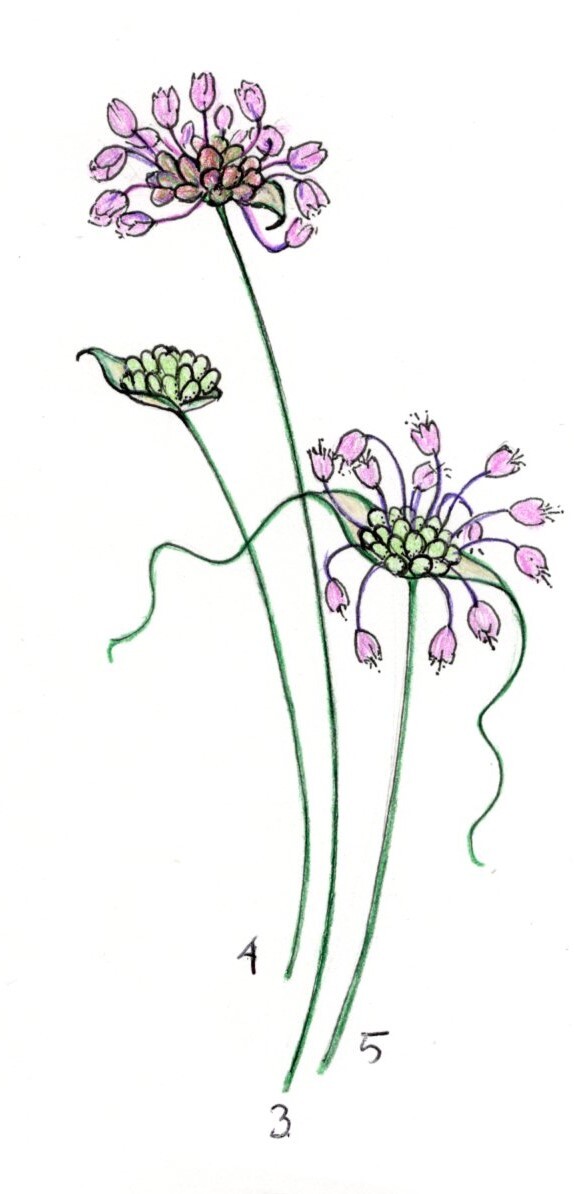The genus Allium
Onions, leeks and garlic are all members of the genus Allium. Five different kinds of Allium have been recorded on the Ham Lands. It is worth looking out for these interesting plants. People often wonder if it is worth using wild alliums in the kitchen. One could, but they would certainly be inferior to cultivated produce. In any case it is far better to leave plants to regenerate and for the enjoyment of others. Please do not forage our alliums.
The genus Allium may be recognized as follows:
- They grow from bulbs
- Unusual structures, called bulbils, can be found amongst the flowers of some species. Although resembling seeds or tiny fruit, these structures are small ‘above ground’, bulbs from which new plants can grow.
Young flower head of Sand Leek enclosed by a tissue-like bract. The irregular shape is due to the bulbils.
1. Ramsons (Allium ursinum)
This species is easy to recognize, as it is our only Allium to have leaf-shaped leaves, all others have grass-like leaves. The flowers are white and there are no bulbils. Although common nationally and typically carpeting woodland floors, this species is, as yet, infrequent at Ham. It flowers from April.
2.Three-cornered Leek (Allium triquetium)
This species resembles the white form of bluebell, but the flowers dangle from the tip of a triangular stem (bluebell flowers are spaced along a round stem). The leaves are grass-like and flat. Bulbils are absent. This introduced species is invasive and spreads easily, especially in the West Country; as yet it is still infrequent at Ham. The flowers appear from April.
3. Sand Leek (Allium scordoprasum)
This is our most iconic Allium and at c 1m high, it is also our tallest. The leaves are grass-like and flat, both pink flowers and bulbils are present. Although an introduced species, it is uncommon in the UK. We are lucky to have some good clumps near the Lock. How it came to be here is a mystery. Our Sand Leek patch was dwindling as robust plants encroached. In winter 2019 the Friends of FoHL Butterfly Group spent some time removing the troublesome plants. It flowers from May.
4. Crow Garlic or Wild Onion (Allium vineale)
This species has hollow grass-like leaves, which are scattered among the grasses and merge into the sward. Although hard to spot, a slight blue grey tone will help distinguish them. Disappointingly, the flower heads are not attractive because the variety in our area (var. compacta) never produces flowers, only bulbils. Perhaps this adds to their fascination? Crow Garlic, a native species, is abundant and by sheer quantity must be considered an important constituent of the Ham Lands. The flower heads appear from June onwards.
5. Keeled Leek (Allium carinatum)
This is our daintiest Allium. It is easily recognized as the bracts bear notably long tips. The grass-like leaves are flat. Both bright pink flowers and bulbils are present. This introduced species is relatively uncommon and was only spotted at Ham in recent years. It can be found scattered beside paths on Ham Lands South. It flowers from August.
Text and drawings by Diane Bridson


